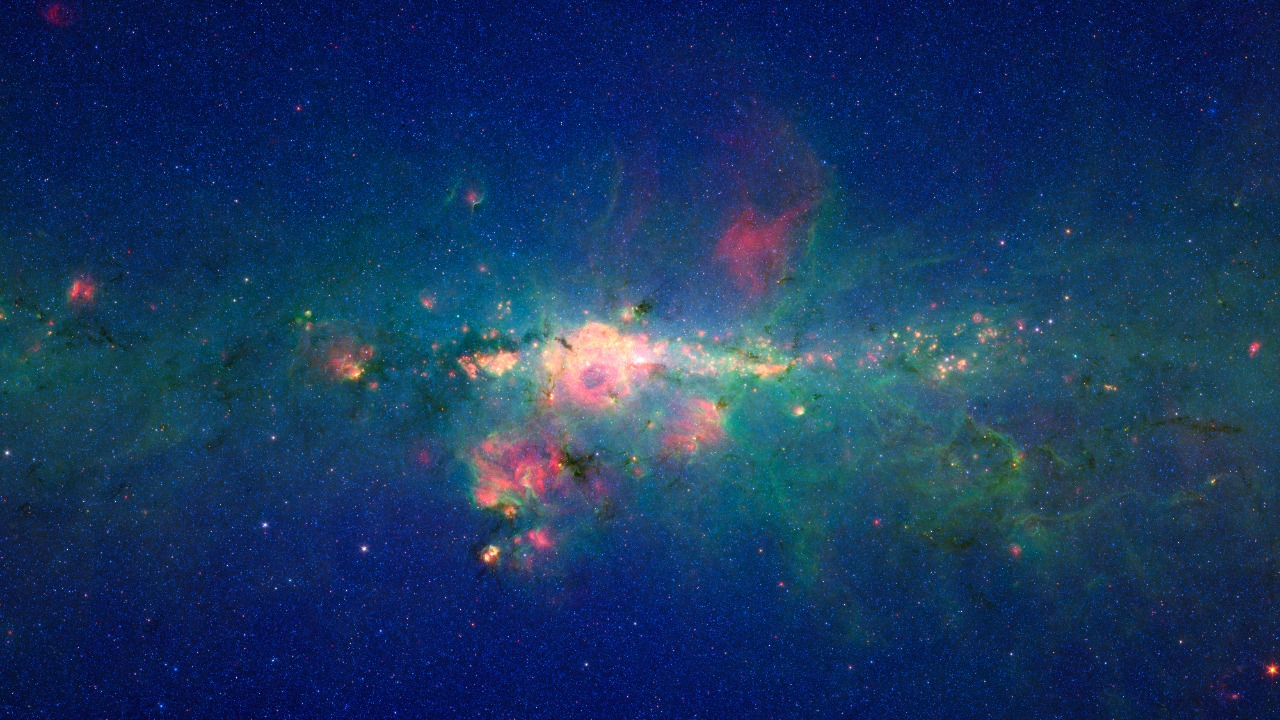
A mysterious glow at the center of our galaxy has astronomers scratching their heads. The phenomenon, recently analyzed in greater detail, has intensified the debate over whether this glow originates from pulsars or dark matter. This enigma, nestled in the heart of the Milky Way, could potentially reshape a major cosmic theory, challenging our understanding of galactic dynamics. In a separate but potentially related development, a new theory has been proposed to explain the mysterious “Little Red Dots” observed in the early universe, hinting at a possible connection between these cosmic mysteries.
Observing the Milky Way’s Central Glow
The detection of this mysterious glow at the center of the Milky Way has sparked a flurry of scientific interest. Initial observations and subsequent analysis have revealed intriguing characteristics about this glow. Its intensity and specific location within the galactic center have made it a subject of intense scrutiny. The glow’s properties, as revealed by recent data, have only added to the enigma, making it a captivating puzzle for astronomers.
Dark Matter as a Potential Source
One of the leading theories proposes that the glow could be a result of dark matter interactions at the galactic center. This explanation ties into broader cosmic theories, suggesting that dark matter could play a more significant role in galactic dynamics than previously thought. However, verifying dark matter’s role in producing the central glow presents its own set of challenges, given the elusive nature of dark matter and the complex properties of the glow.
Pulsars as an Alternative Explanation
Another theory posits that the glow could be produced by pulsars, compact stars known for their intense emissions. The spectrum and timing patterns of the glow bear similarities to emissions from pulsars, making them a plausible source. The appeal of this theory lies in its simplicity, as it does not require the invocation of exotic matter like dark matter to explain the phenomenon.
Implications for Cosmic Theories
Confirming the source of the glow could have far-reaching implications for our understanding of the cosmos. It could necessitate revisions to existing models of galaxy formation and evolution, challenging long-held assumptions. The findings from the Milky Way could also shed light on wider astrophysical puzzles, including unresolved debates about the nature of dark matter and the role of pulsars in galactic dynamics.
Connections to Early Universe Mysteries
In a potentially related development, a new theory has been proposed to explain the mysterious “Little Red Dots” observed in the early universe. These red dots represent compact structures and could hold clues about the evolution of the cosmos. There could be indirect ties between these early universe phenomena and modern galactic glows like the one at the Milky Way’s center, hinting at a possible connection between these cosmic mysteries.
Future Research Directions
Future observations could help distinguish between dark matter and pulsar origins for the central glow. Technological advancements will be crucial in probing this phenomenon further. Resolving the nature of the glow could also influence theories about the “Little Red Dots” and other cosmic mysteries, opening up new avenues of research in astrophysics.
More from MorningOverview